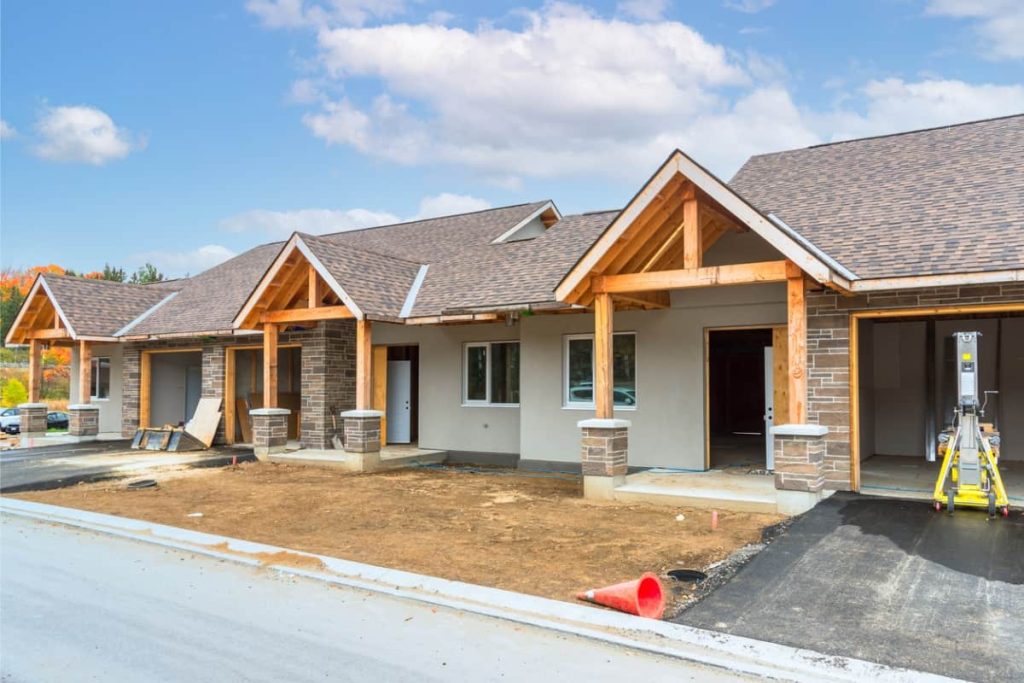Recent policies could make home ownership affordable for eligible newcomers.

Advertisement: Click here to learn how to Generate Art From Text
Chrystia Freiland, Deputy Premier/Finance minister, announced on April 11, 2024 several new housing affordability initiatives designed to help both first-time homebuyers and current homeowners.
After the federal restrictions placed on foreign homebuyers last year (more about that later), some newcomers may wonder if they qualify for the recently announced housing affordability programs.
This article explains how policies implementing increased RRSP withdraw limits and extended mortgage term can benefit newcomers in Canada, making it easier for them to purchase their first house.
Discover if you are eligible for Canadian immigration
We also provide a guide on the changes and how they affect newcomers. International studentsThe following are some examples of how to get started: foreign workers, can pursue them.
Understanding Canada’s restrictions on foreign home buyers
The Canadian government has enacted a law that will be enforced starting January 1, 2023.
This government policy, that wasRecent extension until January 1, 2027. was implemented to restrict “non-Canadians* … from buying residential property, … defined as buildings with 3 … or [fewer dwelling units, including] semi-detached houses, and condominium units.”
*Non-Canadians are defined as “those who are not Canadian citizens or permanent residents”
In certain circumstances, non-Canadians such as temporary residents like foreign workers or international student may still be eligible for a Canadian residential property. Click here to learn moreClick here for more information.
Increased withdrawal limits from Registered Retirement Savings Plans
First-Time Homebuyers will be able, as of April 16, 2024 to withdraw more funds from their Registered Retirement Savings Plan to pay a downpayment for their first home.
After the change comes into effect, first time home buyers in Canada will be able withdraw $60,000 for a downpayment on the property that they are buying. This is a $25,000 increase from the previous withdrawal limit. Before April 16, the maximum amount that first-time homebuyers could withdraw from their RRSP to pay for a downpayment was $35,000
Minister Freeland has increased the withdrawal limits for RRSPs “plus the Tax-Free First Home Savings Account* [FHSA], can be combined.”Freeland says that these initiatives can be combined to create a more effective and efficient system “will give younger Canadians more tools to save what is actually needed”First-time home buyers are able to purchase their own home.
*More on FHSAs below.
In other words, the government’s decision to increase RRSP withdrawal limits is expected to allow Canadians, including eligible newcomers, to access more money they can use for a down payment, easing the initial financial burden of purchasing a home in Canada.
Canada’s tax-free FHSA
The Canadian government will introduce a new savings account in 2022 called the FHSA. This tax-free account allows Canadian citizens and permanent resident to save up $8,000 per annum towards their first home. This account offers several tax-related advantages to eligible account holders while they save to buy their first house in Canada.
- Contributions to FHSAs are tax deductible and provide tax rebates for account holders.
- Tax-free growth is the result of all contributions to a FHSA.
- When a FHSA account holder withdraws money from their account to pay for a downpayment, they do not have to pay taxes on the money.
Note:Contributions to FHSAs are tax-free up to a maximum of $40,000 per lifetime.
Extended RRSP Repayment Period
According to the Canadian government Canadians with RRSPs, including newcomers will soon have twice as much time as they did before. “to start repaying their RRSP contributions [after making] a withdrawal to pay for the deposit on a home.”
Specifically, Minister Freeland said: “first-time home buyers who withdraw money from their RRSPs [by] Dec. 31, 2025, will now have five years to begin repayments.”Before the extension, Canadians and newcomers who had an RRSP only had two years to repay their contributions.
This extension will allow eligible account holders greater financial flexibility in repaying their RRSPs. This will be beneficial for both the short-term and long-term planning of budgets for new homeowners.
Mortgages can be amortized for a longer period
Beginning on August 1 this year, some* first-time homebuyers with insured mortgages “will get 30 years to pay [their] mortgage back”According to the Canadian government,
Note:This extended amortization period is only available to first-time homebuyers who purchase a newly constructed home.
The longer amortization periods for mortgages have a positive effect on Canadian homeowners because they reduce their monthly payments.
Therefore, this initiative is expected to, in the words of Minister Freeland, make it possible for “more younger Canadians [to]”I can afford to pay the monthly mortgage on my new home”. This should make homeownership accessible to younger Canadians in general. This may also be beneficial to newcomers, who usually immigrate as young adults.
Changes to the Canadian Mortgage Charter
The Canadian government Canadian Mortgage Charter has been updatedThis fall, an update to the Canadian immigration system will be of particular benefit to newcomers and other “vulnerable borrowers.”
A summary of the government’s most recent Charter update is available below.
According to a Recent article from CBC NewsThe new Mortgage Charter:
- Banks must now comply with the new requirements “reach out to homeowners four to six months in advance of their mortgage renewal date to inform them of affordability options”
- Lenders will now have to contact borrowers “up to 24 months in advance of a homeowner’s mortgage renewal to discuss options”
- Lenders must* now “provide temporary extensions on the amortization period for mortgage holders who were facing financial difficulties.”
*It should be noted that this once temporary extension measure “is now being made permanent … depending on a homeowner’s circumstances” according to Canada’s Deputy Prime Minister/Finance Minister. Freeland said that the new update could even apply to “people with insured mortgages and making that change will not come with any extra fees or penalties.”
According to the same article by CBC News, the government announced that the following Charter updates would assist. “vulnerable borrowers under financial strain”:
- Mortgage relief measures include the waiver of fees and costs that otherwise would have been charged.
- When mortgage relief measures lead to mortgage payments that do not cover interest payments, interest is waived.
- The insured mortgage holders will not be subject to “re-qualifying under the stress test when switching lenders at the time of a mortgage renewal”
- Borrowers are allowed “to make lump sum payments to avoid negative amortization or sell their principal residence without incurring prepayment penalties”
The extended notice periods that banks and other lenders have imposed should give homeowners more time to plan their financial future. Some fees and interest payments are expected to be waived for certain people, and housing could now become more affordable due to extended amortization periods.

‘ Credit:
Original content by www.cicnews.com: “Recent policies which may make home ownership more affordable to eligible newcomers in Canada”
Read the full article here https://www.cicnews.com/2024/04/recent-policies-that-may-make-home-ownership-more-affordable-for-eligible-newcomers-to-canada-0443972.html





